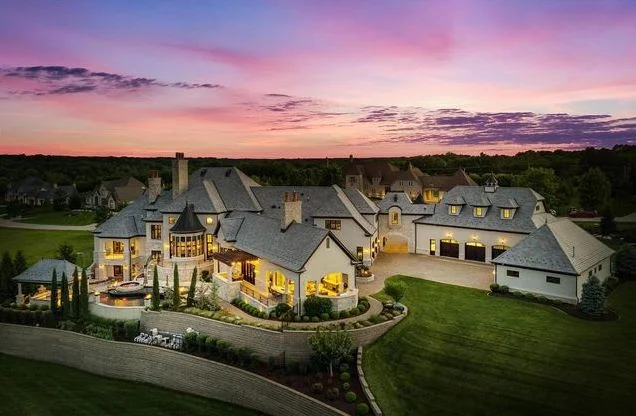Introduction
The Ultimate Guide to Home Improvement is more than just a trend; it’s a transformative journey that allows homeowners to enhance their living spaces, reflect personal style, and increase property value. As our lifestyles and needs evolve, so do our homes. Whether you’re looking to sell, accommodate a growing family, or simply enjoy a more functional environment, home improvement offers countless possibilities.
In today’s fast-paced world, the importance of having a sanctuary at home cannot be overstated. The right improvements can provide comfort, efficiency, and a sense of pride in your living space. This guide will help you navigate the intricate world of home improvement, covering essential topics such as planning, budgeting, sustainable practices, and common pitfalls to avoid.
Purpose of This Guide
This comprehensive guide aims to equip you with the knowledge and tools necessary to embark on your home improvement journey. By understanding various aspects of improvement—from setting clear goals to selecting the right materials—you will be empowered to make informed decisions that suit your lifestyle and budget.
We will explore popular home improvement projects in detail, discuss the pros and cons of DIY versus hiring professionals, and address frequently asked questions. With the insights shared in this guide, you will be well-prepared to transform your home into a space that meets your unique needs.
Chapter 1: Understanding Home Improvement
Home improvement encompasses a vast array of activities aimed at enhancing a property’s appearance, functionality, and value. This chapter will define home improvement, discuss its benefits, and explore the different types of projects available to homeowners.
Definition and Scope
Home improvement refers to any renovation, alteration, or enhancement made to residential properties. This includes both interior and exterior updates, repairs, and upgrades. Home improvement projects can range from simple cosmetic changes, such as repainting walls, to significant structural alterations, like adding new rooms or extensions.
Benefits of Home Improvement
- Increased Property Value: One of the most significant benefits of home improvement is the potential increase in property value. According to real estate experts, certain renovations, such as kitchen and bathroom remodels, typically yield the highest return on investment. A well-executed kitchen remodel can recoup about 80% of its cost upon resale, making it a wise investment for homeowners.
- Enhanced Comfort and Functionality: Improving your home can lead to a more enjoyable living environment. Whether it’s creating open spaces for entertaining or adding functional storage solutions, home improvements can significantly enhance your daily life. Consider how new windows can improve energy efficiency and comfort, or how an updated layout can create a more functional space for your family.
- Energy Efficiency: Implementing energy-efficient upgrades can significantly reduce your utility bills. Upgrades such as replacing old appliances with ENERGY STAR-rated models, adding insulation, or installing energy-efficient windows can lead to long-term savings and a reduced environmental footprint.
- Personalization: Your home should reflect your style and needs. Whether it’s a bold paint color or unique fixtures, home improvement allows for self-expression. This is your chance to create a space that truly feels like home, tailored to your tastes and lifestyle.
- Enhanced Quality of Life: Improvements can positively impact your overall quality of life. A well-designed and organized home can reduce stress, improve productivity, and enhance your well-being.
Types of Home Improvement Projects
- Cosmetic Updates: Often the easiest and most cost-effective improvements, these include painting, installing new flooring, or updating light fixtures. They can dramatically change the look of a space without extensive renovations. For example, a fresh coat of paint can transform a dull room into a vibrant, welcoming space.
- Functional Upgrades: Improving storage solutions or enhancing layout for better flow can significantly increase a home’s livability. For instance, adding built-in shelving can maximize storage while maintaining an uncluttered appearance.
- Major Renovations: These projects involve substantial changes to the structure or layout of your home. Expanding your living space, finishing a basement, or reconfiguring existing areas can increase both comfort and value. Major renovations require careful planning and budgeting, as they can be time-consuming and costly.
- Outdoor Enhancements: Improving your outdoor spaces, such as landscaping, adding a deck, or creating an outdoor kitchen, can enhance your home’s curb appeal and provide additional living space. Outdoor living areas are increasingly popular, as they allow for relaxation and entertainment in a natural setting.
- Technology Upgrades: In today’s digital age, incorporating smart home technology can enhance convenience and security. Consider installing smart thermostats, security systems, or home automation devices to improve functionality and energy efficiency.
Chapter 2: Planning Your Home Improvement Project
Successful home improvement begins with careful planning. This phase is crucial in determining the scope, budget, and timeline of your project.
Setting Clear Goals
Before starting any project, it’s essential to define what you want to achieve. Here are some guiding questions to help clarify your goals:
- What is the primary purpose of the project? Are you looking to sell your home, enhance comfort, or update outdated features? Understanding the main objective will guide your decisions throughout the process.
- What style or theme do you want to convey? Consider whether you prefer a modern, minimalist look or a cozy, rustic feel. Research design trends and gather inspiration from magazines, websites, or social media platforms like Pinterest and Instagram.
- Who will be using the space? If you have a growing family, think about how the design will accommodate future needs. For instance, if you have young children, consider durable materials and finishes that can withstand wear and tear.
- What is your budget? Establishing a realistic budget early in the planning process will help you make informed decisions and avoid overspending.
Detailed Budgeting Strategies
- Estimate Costs: Gather estimates for materials, labor, and any additional expenses. Use online resources to get a ballpark figure for common projects. Create a detailed spreadsheet to track estimated and actual costs throughout the project.
- Prioritize Projects: If your budget is tight, prioritize projects that will yield the highest return on investment. For instance, a kitchen remodel often brings more value than a home office conversion. Focus on improvements that will enhance both functionality and aesthetics.
- Set a Contingency Fund: Unexpected costs can arise, so it’s wise to set aside 10-20% of your budget for contingencies. This buffer will help you manage surprises without derailing your project.
- Explore Financing Options: Consider various financing options such as personal loans, home equity loans, or government grants for energy-efficient upgrades. Researching financing can save you money in the long run and help you achieve your goals without financial strain.
- Track Expenses: Use budgeting apps or spreadsheets to keep track of expenses throughout the project. Regularly compare your actual spending against your budget to ensure you stay on track.
Creating a Realistic Timeline
- Outline Key Phases: Break down the project into key phases: design, preparation, execution, and finishing touches. Assign a timeline to each phase, but remain flexible as delays can occur.
- Account for Weather and Seasonal Factors: If you’re planning outdoor improvements, consider seasonal factors that may affect your timeline. For example, landscaping projects are best executed in the spring or fall when temperatures are moderate.
- Communicate with Contractors: If you’re hiring professionals, communicate your timeline clearly and regularly check in on progress. Setting milestones can help keep everyone on track and ensure timely completion.
- Be Prepared for Delays: Understand that unexpected delays can occur, whether due to weather, supply chain issues, or contractor availability. Build extra time into your timeline to account for these factors.
Chapter 3: DIY vs. Hiring Professionals
One of the biggest decisions in home improvement is whether to tackle projects yourself or hire professionals. Each option has its benefits and challenges.
DIY Projects
Benefits of Going the DIY Route:
- Cost Savings: By doing it yourself, you can save on labor costs. For instance, painting your home can be a fun weekend project that significantly enhances your space at a fraction of the cost.
- Skill Development: Tackling projects can improve your handy skills, which is beneficial for future maintenance. Learning how to install a backsplash or lay tile can empower you to take on additional tasks in the future.
- Flexibility: DIY projects allow you to work at your own pace and schedule. You can tackle tasks during evenings or weekends without the pressure of a contractor’s timeline.
- Personal Satisfaction: Completing a project on your own can be incredibly rewarding. The sense of accomplishment that comes from transforming your space can boost your confidence and motivation for future projects.
When to Hire Professionals
When It’s Best to Hire:
- Complexity: Projects involving plumbing, electrical work, or structural changes should always be left to licensed professionals. For example, if you’re considering relocating plumbing for a bathroom remodel, it’s best to hire a plumber who understands local codes and regulations.
- Quality Assurance: Professionals bring experience and expertise, which can save you money in the long run by avoiding mistakes. A well-done project can last for years, whereas DIY errors may require costly repairs.
- Time Constraints: If you have a busy schedule, hiring help can save you time and stress. Professionals can often complete projects more quickly than a DIYer, which is especially important if you’re working within a tight timeline.
- Access to Resources: Professionals often have access to higher-quality materials, tools, and equipment. This can lead to better results and increased durability in your home improvements.
How to Vet Contractors
- Check References: Ask for and contact previous clients. Inquire about their experiences, the quality of work, and whether they would hire the contractor again. Positive feedback can give you confidence in your choice.
- Look for Credentials: Verify licenses, insurance, and any relevant certifications. This step is crucial to ensure that the contractor adheres to local regulations and standards. Proper licensing also protects you in case of disputes or accidents.
- Get Multiple Estimates: Compare bids to ensure you’re getting a fair price. It’s wise to obtain at least three estimates for larger projects. Be cautious of bids that seem too low; they may indicate subpar work or hidden costs.
- Trust Your Instincts: Choose someone you feel comfortable communicating with, as a good working relationship can lead to a smoother project. Clear communication is key to ensuring your vision is realized.
Balancing DIY and Professional Help
For some projects, a hybrid approach works best. You might handle cosmetic updates while hiring professionals for more complex tasks. This strategy allows you to save money without sacrificing quality. Assess your skills honestly and choose the best path for each aspect of your project.
Chapter 4: Popular Home Improvement Projects
Now that you’ve planned your project, it’s time to explore popular home improvement ideas in more depth. Each project will be explored in detail, highlighting key considerations, tips, and potential pitfalls.
Kitchen Remodeling
The kitchen is often considered the heart of the home. A well-planned remodel can improve functionality and aesthetics while enhancing your cooking experience.
- Cabinet Upgrades: Refacing or replacing cabinets can dramatically change the look of your kitchen. Opt for modern finishes, such as matte black or white, for a contemporary feel. Consider open shelving for a modern touch or traditional cabinetry for a classic look. Invest in quality hardware, as it can significantly impact the overall appearance.
- Countertops: Choosing the right countertop material is crucial. Granite, quartz, and butcher block each offer unique benefits. Granite provides durability and a classic look, while quartz is non-porous and easy to maintain. Butcher block adds warmth but requires more upkeep. Consider your cooking habits and lifestyle when selecting materials.
- Appliance Updates: Energy-efficient appliances can save money and improve functionality. Look for ENERGY STAR ratings to ensure you’re making eco-friendly choices. Stainless steel is a popular choice for modern kitchens, but colorful or retro-style appliances can add personality.
- Layout Changes: Explore open-concept designs that integrate the kitchen with living areas. This approach not only enhances flow but also creates a more spacious feel. Consider the work triangle (the relationship between the stove, sink, and refrigerator) to improve efficiency in your kitchen layout.
- Lighting: Good lighting is essential in a kitchen. Layered lighting, including task, ambient, and accent lights, can create a welcoming atmosphere. Pendant lights above an island or under-cabinet lighting can add both functionality and style.
Bathroom Renovation
Bathrooms are another crucial area for improvement. A bathroom remodel can increase comfort and home value.
- Fixture Replacement: Updating faucets, showerheads, and toilets can enhance both style and efficiency. Opt for water-saving fixtures to reduce your environmental impact. Consider high-efficiency toilets that use less water without sacrificing performance.
- Tile Work: New tile can refresh the look of your bathroom and increase durability. Consider mosaic designs for a stylish touch or larger format tiles for a contemporary look. Heated flooring is a luxurious option that adds comfort during colder months.
- Storage Solutions: Adding shelves or cabinets can help with organization. Floating vanities and built-in niches can maximize space while keeping the area clutter-free. Consider using vertical space for storage with tall cabinets or wall-mounted shelves.
- Lighting Enhancements: Good lighting is essential in a bathroom. Layered lighting, including task, ambient, and accent lights, can create a welcoming atmosphere. Dimmers can also help adjust the brightness for different moods.
- Ventilation: Ensure proper ventilation to prevent moisture buildup and mold growth. Installing an exhaust fan is crucial, especially in bathrooms without windows.
Outdoor Spaces
Enhancing your outdoor areas can create inviting spaces for relaxation and entertainment.
- Landscaping: Planting trees, shrubs, and flowers can improve curb appeal. Native plants often require less maintenance and are better for the local ecosystem. Consider hiring a landscape designer for larger projects to ensure a cohesive look.
- Decks and Patios: Outdoor living spaces are in high demand and can significantly increase your home’s value. Consider durable materials like composite decking that require minimal upkeep. Add outdoor furniture, lighting, and accessories to create a cozy environment for gatherings.
- Fencing: Installing or upgrading a fence can provide privacy and security. Options range from classic wood to modern vinyl or metal designs. Be sure to check local regulations regarding fence height and materials before installation.
- Outdoor Kitchens: Creating an outdoor cooking area can enhance your home’s entertaining potential. Incorporate features like a grill, sink, and refrigerator for maximum convenience. Consider including a dining area to make the most of your outdoor space.
- Fire Pits and Seating Areas: Adding a fire pit can create a focal point for outdoor gatherings. Pair it with comfortable seating to encourage relaxation and conversation during cool evenings.
Living Room Updates
The living room is often the focal point of the home. Small updates can make a significant impact.
- Paint and Wallpaper: A fresh coat of paint or stylish wallpaper can breathe new life into your living space. Consider accent walls to add depth and visual interest. Light colors can make a room feel larger, while dark hues can create a cozy atmosphere.
- Furniture Arrangement: Rearranging furniture can create a more inviting atmosphere. Aim for a layout that promotes conversation and connection. Consider traffic flow and ensure there is enough space for movement.
- Lighting Changes: Updating light fixtures or adding floor lamps can enhance the ambiance. Consider dimmers for adjustable lighting. Layered lighting, including overhead lights, table lamps, and accent lights, can create a warm and inviting space.
- Personal Touches: Incorporate artwork, family photos, or unique decor pieces that reflect your personality. These elements can make your living room feel warm and inviting. Consider seasonal decor updates to keep the space feeling fresh and vibrant.
- Rug Selection: A well-chosen area rug can define a space and add warmth. Choose a rug that complements your color scheme and ties the room together. Ensure it’s appropriately sized for your furniture arrangement.
Chapter 5: Sustainability in Home Improvement
More homeowners are considering eco-friendly options in their improvement projects. Sustainable practices not only benefit the environment but can also lead to significant savings.
Benefits of Sustainable Practices
- Long-term Savings: While initial costs for sustainable materials or technologies may be higher, they often lead to lower utility bills and reduced maintenance costs over time. For example, investing in solar panels can significantly lower energy expenses, paying for themselves within a few years.
- Environmental Impact: Reducing your carbon footprint is increasingly important to many homeowners. Sustainable practices contribute to a healthier planet and can enhance your home’s resale value. Properties with energy-efficient features often attract environmentally conscious buyers.
- Healthier Indoor Environment: Sustainable materials and practices often lead to improved indoor air quality. Low-VOC paints and finishes can reduce harmful chemicals in your home, creating a healthier living environment for you and your family.
- Increased Property Value: Homes with energy-efficient upgrades and sustainable features can command higher prices on the market. Buyers are often willing to pay more for homes with lower operating costs and eco-friendly attributes.
Eco-Friendly Materials and Methods
- Recycled Materials: Consider using reclaimed wood, recycled glass, or other sustainable materials in your renovation. These materials not only reduce waste but also add character to your home. For instance, reclaimed wood can be used for flooring, cabinetry, or decorative accents.
- Energy-Efficient Windows: Upgrading to double- or triple-pane windows can enhance insulation and reduce energy consumption. Look for windows with low-E coatings to minimize heat transfer. Energy-efficient windows can significantly lower heating and cooling costs.
- Low-VOC Paints: Choosing paints with low volatile organic compounds (VOCs) can improve indoor air quality. Many manufacturers now offer a variety of colors and finishes that meet these standards. Opt for environmentally friendly brands that prioritize sustainability.
- Energy-Efficient Appliances: When replacing appliances, choose ENERGY STAR-rated options. These appliances consume less energy and water, leading to cost savings over time. Look for modern features that enhance efficiency, such as smart technology that optimizes usage.
- Solar Energy Systems: Installing solar panels can be a game-changer for your energy consumption. Consider the installation costs and potential savings on your electricity bill. Many governments offer incentives for solar installations, further improving the return on investment.
Case Studies of Sustainable Renovations
- Example 1: The Solar-Powered Home: A family invested in solar panels during a major renovation. They report a 60% reduction in energy costs, significantly offsetting the initial investment. The family is pleased with their contribution to a greener environment and the increased value of their home.
- Example 2: The Eco-Friendly Kitchen: A couple remodeled their kitchen using recycled materials and energy-efficient appliances. They love their modern, stylish space and enjoy the long-term savings on utility bills. By using low-VOC paints and sustainably sourced materials, they created a healthier environment for their family.
- Example 3: The Green Bathroom: A homeowner transformed her bathroom by installing low-flow fixtures, recycled tiles, and natural stone countertops. The project not only reduced water usage but also created a calming and sustainable space. She found joy in making eco-friendly choices and promoting sustainability within her home.
Chapter 6: Common Mistakes to Avoid
Even seasoned DIYers can make mistakes. Here are some common pitfalls to watch out for:
Lack of Research
Failing to gather enough information can lead to poor decisions. Take the time to educate yourself on best practices, materials, and local regulations. Utilize online resources, attend workshops, or consult with experts to gain valuable insights.
Skipping Permits
Some projects require permits. Skipping this step can lead to fines and complications when selling your home. Always check local regulations and obtain the necessary permits to ensure compliance. Research what permits are needed for your specific project to avoid delays.
Underestimating Costs
Many homeowners find that they spend more than anticipated. Always factor in extra costs and allow for contingencies. A good rule of thumb is to budget an additional 10-20% for unexpected expenses. This buffer can help you manage unforeseen issues without derailing your project.
Rushing the Process
Take your time with planning and execution. Rushing can lead to mistakes that may require costly fixes. Quality work often takes time, so be patient and thorough. Enjoy the process, and don’t hesitate to ask for help or advice when needed.
Ignoring Safety Precautions
Safety should always be a priority. Ensure you’re using appropriate protective gear when working on projects, and understand the risks associated with specific tasks. Follow safety guidelines for tools and materials to avoid injuries and accidents.
Chapter 7: FAQ: Your Home Improvement Questions Answered
What are the best home improvement projects for resale value?
Projects like kitchen and bathroom remodels, adding a deck, and improving curb appeal generally offer the best returns. Focus on high-impact areas that buyers notice first. Consider landscaping and exterior upgrades as well, as they set the tone for the entire property.
How can I finance my home improvement projects?
Options include personal loans, home equity loans, credit cards, or government grants for energy-efficient upgrades. Researching financing options can help you find the best fit for your budget. Consult with financial advisors to understand the implications of each option.
What are some easy DIY projects for beginners?
Simple projects include painting, installing new light fixtures, landscaping, and updating hardware on cabinets. Start with tasks that match your skill level and gradually tackle more complex projects. Consider watching tutorials online to build confidence.
How do I find reliable contractors?
Seek recommendations from friends, read reviews online, and check for proper licensing and insurance. Interviews with potential contractors can also help you gauge their expertise and compatibility. Ensure clear communication to avoid misunderstandings.
Can home improvement projects be done in stages?
Absolutely! Breaking projects into manageable stages can make the process less overwhelming and more budget-friendly. This approach also allows for adjustments based on your evolving needs. Prioritize tasks based on urgency and budget to create a manageable timeline.
Chapter 8: Case Studies
Successful Home Improvement Projects
Case Study 1: The Open-Concept Kitchen Remodel
A couple decided to remodel their cramped kitchen into an open-concept design. They worked with a contractor to remove a wall and reconfigure the layout, creating a space that flowed into the dining area. The result was a bright, inviting kitchen that not only improved functionality but also increased their home’s value by 20%. They reported a seamless collaboration with the contractor and emphasized the importance of having a clear vision.
Case Study 2: The Sustainable Bathroom Renovation
A family sought to renovate their outdated bathroom with sustainability in mind. They chose eco-friendly materials, such as bamboo flooring and low-flow fixtures, and incorporated natural light with a skylight. The renovation not only enhanced their daily comfort but also reduced water usage by 30%. The family was thrilled with the results and highlighted the satisfaction of making environmentally conscious choices.
Case Study 3: The DIY Living Room Makeover
A homeowner took on the challenge of updating her living room on a tight budget. She painted the walls, rearranged furniture for better flow, and added personal decor items collected over the years. The DIY effort revitalized her space without breaking the bank. She emphasized the joy of creating a space that reflected her personality and the pride that came with completing the project herself.
Case Study 4: The Outdoor Oasis
A couple transformed their backyard into an outdoor oasis by installing a patio, outdoor kitchen, and fire pit. They chose low-maintenance landscaping and incorporated lighting for evening gatherings. The project not only enhanced their outdoor experience but also increased their home’s value. They shared their satisfaction in creating a space for family and friends to gather, emphasizing the importance of thoughtful design.
Case Study 5: The Energy-Efficient Home
A family invested in solar panels, energy-efficient windows, and smart home technology during their renovation. They reported a significant reduction in energy bills and a more comfortable living environment. By prioritizing sustainability, they created a modern home that aligned with their values and increased their property’s appeal. The family noted the pride in making eco-friendly choices that benefitted both their finances and the planet.
Conclusion
Home improvement is a rewarding endeavor that can transform your living space and improve your quality of life. By taking the time to plan, budget, and educate yourself, you can navigate this journey successfully. Whether you opt for DIY projects or hire professionals, the results can be immensely satisfying.
Key Takeaways
- Start with Clear Goals: Define what you want to achieve with your home improvement project. Understanding your objectives will guide your decisions and help you stay focused.
- Plan Thoroughly: Take the time to research, budget, and create a realistic timeline. A well-structured plan is the foundation of a successful project.
- Consider Sustainability: Eco-friendly practices not only benefit the environment but can also lead to long-term savings. Choose sustainable materials and energy-efficient solutions to enhance your home.
- Learn from Mistakes: Be aware of common pitfalls and mistakes. Educate yourself to avoid issues that could derail your project or lead to unnecessary expenses.
- Celebrate Your Achievements: Home improvement is a journey. Take pride in your accomplishments, whether big or small. Enjoy the process of creating a space that reflects your style and meets your needs.
Your home is a reflection of you—take the first step today, and embark on the journey to create your dream space. As you dive into your home improvement projects, keep this guide handy. Each chapter is filled with valuable insights and tips that can help you make informed decisions. Your dream home awaits, so get started and watch your vision come to life.for more details please visit the website networksights.com







Leave a Reply